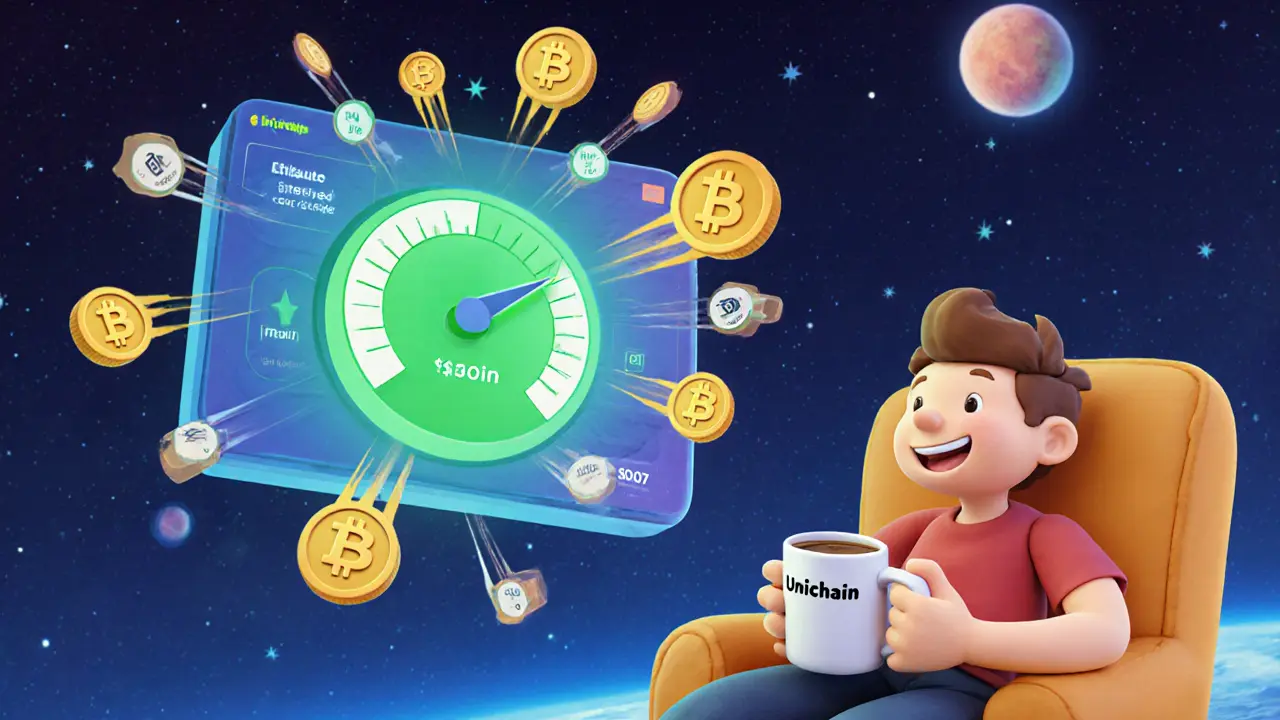Unichain Gas Fees: What You Really Pay to Use This Layer 2 Chain
When you send a transaction on Unichain, a Layer 2 blockchain built to reduce Ethereum costs while keeping its security. It’s designed to make swapping tokens, staking, and using DeFi apps cheaper and faster. But even on a Layer 2, you still pay gas fees—and those fees can surprise you if you don’t know what’s driving them. Unlike Ethereum mainnet, where congestion spikes fees to $50 or more, Unichain keeps things quiet most of the time. But that doesn’t mean it’s always free.
Ethereum Layer 2, a scaling solution that handles transactions off the main Ethereum chain networks like Unichain rely on bundling many small transactions into one big batch that gets settled on Ethereum. That batch costs gas on Ethereum, and that cost gets split across all users. So when fewer people are using Unichain, your fee drops. When more traders jump in—say, during a new token launch—fees can creep up. It’s not like paying a fixed price; it’s more like riding a bus where everyone chips in. You’ll often pay under $0.10, sometimes even $0.01, but never assume it’s zero. Some DeFi apps on Unichain also add their own small service fees on top of the base gas cost.
Compare that to chains like Solana, a high-speed blockchain known for near-zero fees, and Unichain feels more like a middle ground: not the cheapest, but more secure and tied to Ethereum’s trust. It’s not built for ultra-high-frequency trading like Solana or Arbitrum. It’s built for users who want reliable, low-cost access to Ethereum-compatible apps without the noise. That’s why you’ll see DeFi platforms like STON.fi v2, a fast, low-fee DEX built for the TON blockchain or StellaSwap v3, a DeFi exchange for the Polkadot-Moonbeam ecosystem avoid Unichain—it’s not their focus. But for someone swapping ETH, USDC, or a new ERC-20 token without wanting to pay $20 in fees, Unichain makes sense.
What you won’t find on Unichain? Big institutional trades. It’s not optimized for that. What you will find? Regular users, small DeFi projects, and a few airdrop hunters trying to claim tokens without draining their wallets. And that’s exactly why gas fees stay low most days. But if you’re planning to interact with a new contract, always check the fee estimator first. Some wallets don’t show the full picture—especially if the app adds hidden costs. And don’t forget: even if the gas fee is low, your transaction can still fail if the smart contract is poorly coded. That’s happened on Unichain before.
There’s no magic formula for predicting Unichain gas fees. But if you’re trading regularly, watch the network’s activity. Low traffic? Fees will be dirt cheap. High traffic? Maybe wait an hour. And if you’re just testing a new dApp, use a small amount first. You’ll learn faster than reading a guide.
Uniswap v2 on Unichain: A Real-World Review of Speed, Cost, and Usability
Uniswap v2 on Unichain offers 95% lower fees and sub-second trade speeds, making it the fastest and most cost-effective way to trade crypto. Learn how it works, why it's safer, and who should switch now.
